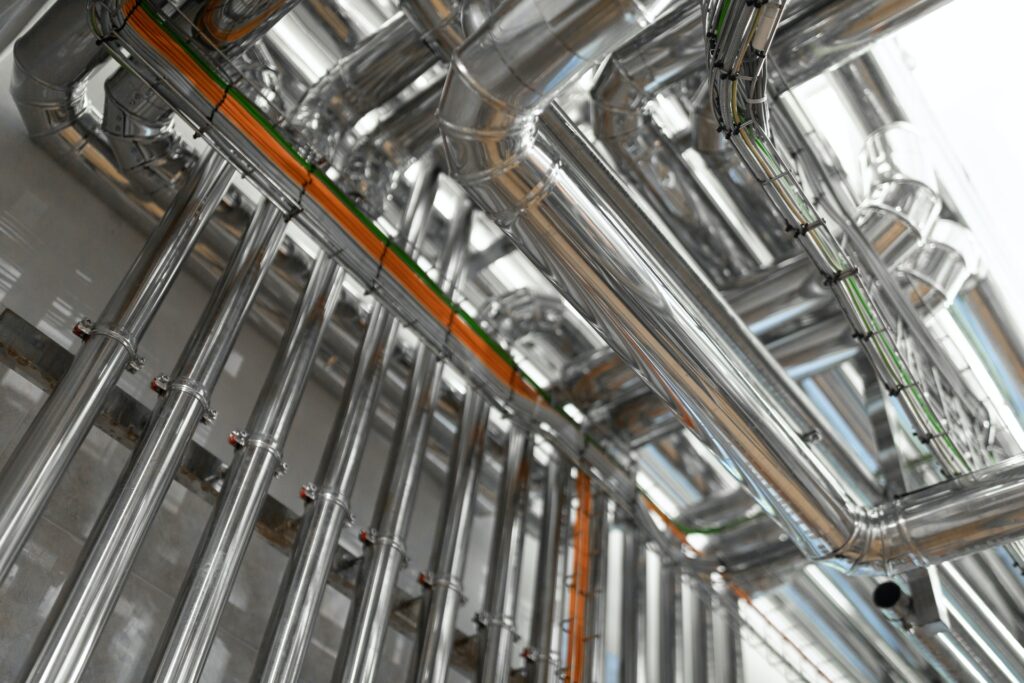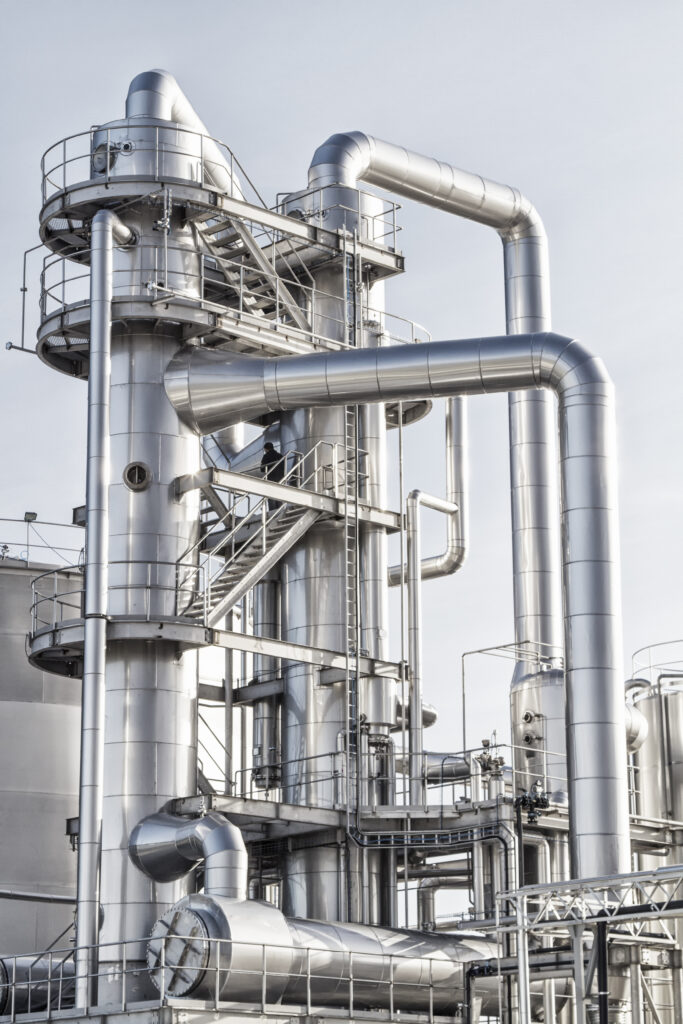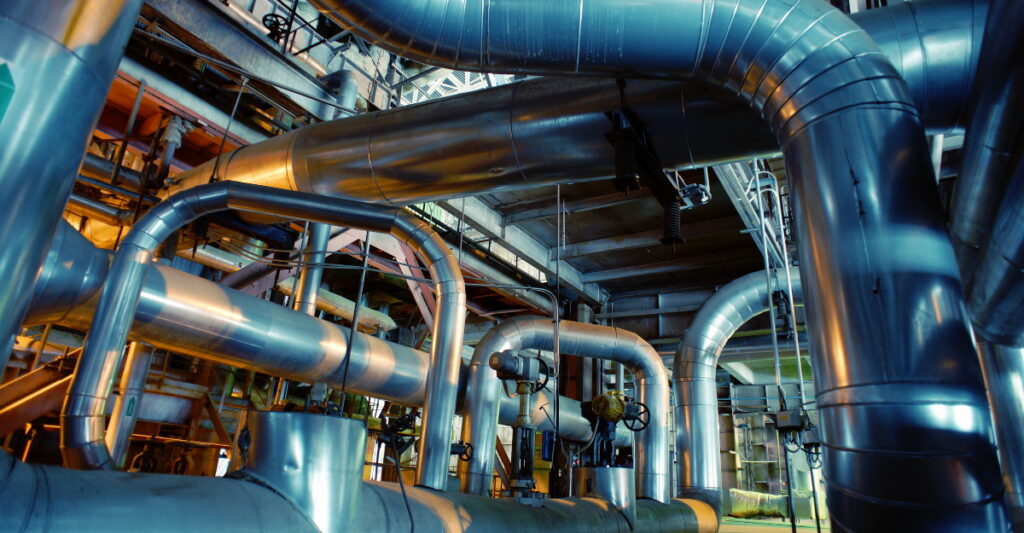What are pipelines and why are they so important?
Imagine you enter a modern industrial plant. What do you see? That's right, a multitude of pipelines that run like veins through the entire plant. But what is a pipeline actually and why are they so indispensable in industry, but also in everyday life?
A Pipeline is basically a closed system of pipes and connectors used to transport liquids, gases or solids from one place to another. They are the backbone of every industrial plant, be it in chemistry, mechanical engineering or energy supply. Without pipelines, the transport of important media such as water, oil or gas would be almost impossible.
Pipelines are omnipresent not only in industry, but also in the private sector. Whether in the heating system, the water supply or the sewage system, they are an indispensable part of our daily lives. But despite their importance, they are often invisible, hidden behind walls or underground.

The technology behind Pipelines however, is anything but trivial. It requires precise planning, calculation and execution to ensure an efficient and safe system. Diverse materials such as steel, plastic or copper are used depending on the application and requirements. The construction forms also vary depending on the requirements, from simple straight lines to complex branches and loops.
The importance of pipelines goes far beyond their physical presence. They are key to understanding industrial processes and protecting the environment. A well-planned and maintained piping system minimises risks such as leaks and accidents, thus contributing to sustainability.
In the following sections, we will dive deeper into the different types of piping and take a closer look at the challenges and solutions in piping technology. But one thing is clear: without pipelines, our modern world would not function.
But how have pipelines developed over time? The history of piping technology is closely linked to industrialisation and advances in materials science. In the past, pipelines made of wood or ceramics were mainly used. However, with the advent of the steam engine and industrialisation, it quickly became clear that more robust materials were needed. Nowadays, steel pipes are widely used in industry, while plastic pipes are often used in private households.
The choice of material has a significant impact on the performance and longevity of a pipeline. For example, steel pipes are ideal for industrial applications due to their high strength and temperature resistance. Plastic pipes, on the other hand, are lighter, easier to install and resistant to corrosion, but they are less suitable for high temperatures or pressures.
Besides the material, the quality of the connecting elements also plays a decisive role. Fittings, flanges and gaskets must be carefully selected and installed to prevent leaks and failures. In modern piping technology, computer-aided simulations and strength calculations are therefore often used to determine the optimum configuration for each project.
Equally important is the regular maintenance and inspection of piping systems. In industry, for example, ultrasonic testing and X-ray examinations are used to monitor the condition of pipelines and detect problems at an early stage.
The field of piping technology is therefore not only technically demanding, but also of great importance to our society. It influences our daily lives and our industry in a way that is often underestimated. And that is precisely why it is so important to take a closer look at and understand this topic.
Different types of piping and their applications
When it comes to piping, the variety is almost limitless. Different industries require different types of piping, each tailored to specific requirements and applications. In this section, we dive deeper into the world of piping and highlight the different materials, designs and applications.
Materials
The choice of material is a critical factor in the design and construction of pipelines. Steel is the most commonly used material in industry, especially in petrochemical and mechanical engineering. It offers high strength and is heat resistant, but prone to corrosion. Plastic pipes are light and corrosion resistant, but less suitable for high pressures or temperatures. Copper is often used in water supply and heating systems.
Designs
The configuration of a pipeline can vary depending on the application. Simple, straight pipes are sufficient in many cases, but there are also special designs such as T-pieces, Y-connections or loops. These are used to direct the flow of the transported media in different directions or to guide it around obstacles.
Applications
The applications of piping are diverse and range from water supply and wastewater disposal in the municipal sector to specialised applications in industry. In the food industry, for example, piping must meet high hygiene standards and often be made of stainless steel or other non-corrosive materials. In the pharmaceutical industry, the highest precision and control are additionally required to ensure the quality of the products.
Pipelines are therefore much more than simple "tubes". They are highly complex systems that have to meet a multitude of requirements. Depending on the industry and application, they can take on a wide variety of shapes and materials, and every detail, from material to design, has an impact on the performance and safety of the system.

In modern industry, comprehensive knowledge in the field of piping technology is therefore essential. Whether it's a matter of material selection, planning or implementation, every step must be carefully thought through to achieve the best possible result. And that is precisely why it is so important to familiarise oneself with the different types of piping and their applications.
Innovative materials such as glass-fibre reinforced plastic (GRP) or stainless steel are being used more and more frequently, especially when special requirements are made of corrosion resistance or mechanical strength. In the petrochemical industry, for example, pipelines made of these materials are in great demand due to their resistance to aggressive chemicals.
Digitalisation is also playing an increasingly important role in the world of pipelines. Modern monitoring systems and sensors can be integrated directly into the pipeline to monitor the condition and performance in real time. This is particularly useful in industries where the highest precision and safety are required, such as the pharmaceutical industry or food production.
Another trend in piping technology is the use of modular systems. These allow quick and flexible adaptation to changing requirements and can be expanded or reconfigured as needed. Modular piping systems are particularly popular in the process industry, where adjustments to production lines must be made frequently.
Whether processing raw materials, manufacturing products or supplying cities, pipelines are in use everywhere and their importance cannot be overstated. From material selection to design and maintenance, every aspect must be carefully considered to ensure optimal performance and safety.
Challenges and solutions in the field of piping technology
The world of piping is full of challenges, but fortunately there are also numerous solutions. From planning to implementation, every step in piping technology requires specialised know-how and often innovative approaches. In this section we look at the most common problems and how they can be solved.
Planning and calculation
Planning a pipeline is a complex process that must take numerous factors into account. From material selection to strength calculations, everything must be coordinated to ensure an efficient and safe system. In modern industry, computer-aided models and simulations are therefore often used to find the optimal design.
Installation and maintenance
Installing a pipeline requires precise work and special tools. In addition, regular maintenance and inspection is essential to extend the life of the pipeline and to detect potential problems at an early stage. Modern monitoring technologies such as sensors and cameras can be a valuable help.
Environment and sustainability
The environmental impact of piping is an increasingly important issue. From material selection to disposal, every step must be considered from a sustainability perspective. Innovative solutions such as the use of recycled materials or energy-saving pump technologies help to minimise the ecological footprint.
The challenges in piping technology are many, but thanks to advanced technologies and innovative solutions, many of these problems can be overcome. It is a constant quest for improvement and optimisation to meet the high demands of modern industry. And that is precisely why it is so important to always be up to date with the latest technology and to continuously educate oneself.
Modern technologies used in pipeline engineering include 3D scanning and drone monitoring. These enable precise measurement and inspection of piping systems, even in areas that are difficult to access.
Also gaining in importance are smart pipelines equipped with sensors to monitor pressure, temperature and flow in real time. This data can then be sent to a central control unit via the Internet of Things (IoT) to react to potential problems at an early stage and increase the efficiency of the system.
Another important topic is energy efficiency. Here, variable frequency drives (VFDs) for pumps offer an interesting solution. By adapting the pump performance to the actual demand, significant energy savings can be achieved, which not only reduces operating costs but also contributes to environmental protection.
With all these challenges and solutions, it is clear that piping technology is a constantly evolving field. It requires continuous research, development and adaptation to new technologies and methods in order to meet the increasing demands. And that is precisely what makes it so exciting and important to continue your education in this field and to always stay up to date.
In the world of piping, terms such as steel pipe, pipe bend, nominal size, pipe systems, pipe classes, compensator and support are not foreign. For example, a steel pipe provides high mechanical strength and is often used in industrial installations. Pipe bends are used to change the direction of a pipe system, while nominal size indicates the internal diameter of the pipe.
Different pipe classes indicate the pressure resistance and temperature resistance of the pipeline and are decisive for the selection of the appropriate material. Expansion joints serve to absorb thermal expansions or movements in the system, and supports provide the necessary stability for the entire installation.
These specific elements and terms highlight how complex and multi-layered the planning, implementation and maintenance of pipe systems can be. It underlines the importance of expertise and continuous training in this rapidly evolving field of engineering.

Conclusion
The world of piping is fascinating and complex. From the choice of materials and the various designs to the technology and special applications in industry, piping technology plays a crucial role. It is a field that requires constant innovation and solutions to meet the growing challenges of the modern world.
Call-to-action
If piping has piqued your interest and you would like to learn more about this exciting topic of engineering and industry, please do not hesitate to contact us or attend one of our specialised courses. I also recommend our 3D CAD construction kitThe tool allows you to effectively and quickly insert 3D components into your design. Stay up to date and discover the fascinating world of piping and its many applications with us. Share this article if you liked it!
 CAD standard parts How to save 50% time - design quickly and easily
CAD standard parts How to save 50% time - design quickly and easily